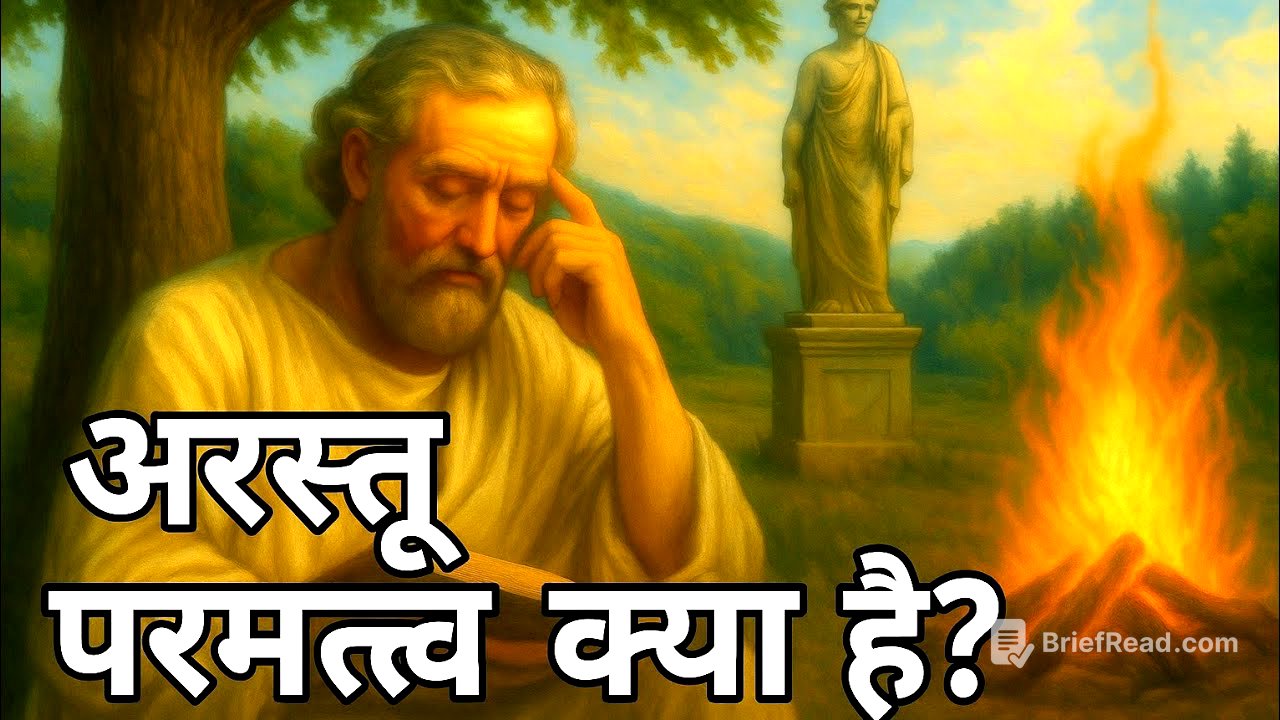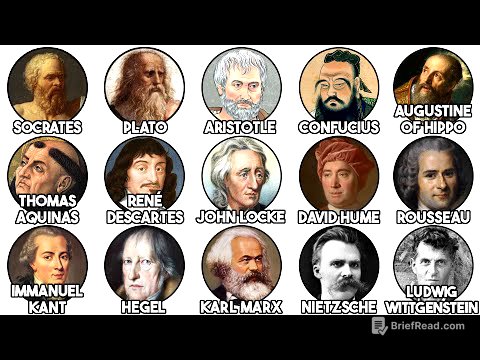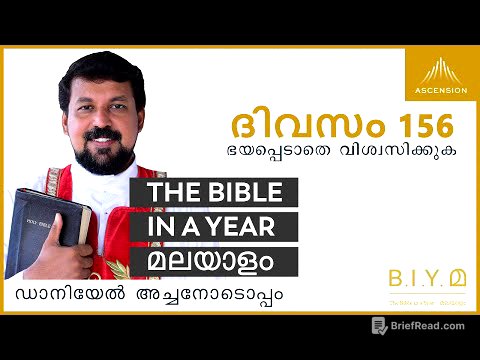TLDR;
Alright, so this video is all about breaking down Aristotle's philosophy in a way that's easy to grasp. It touches upon key concepts like the existence of God, how the world was created, and the relationship between matter and form. The video draws parallels with Indian philosophies like Advaita Vedanta and Vishishtadvaita, explaining how Aristotle's ideas resonate with those of Shankaracharya and Ramanujacharya. It also talks about the concept of potentiality (Saadhy) and actuality (Siddh), and how everything in the world is moving towards achieving its form, which is essentially God.
- Aristotle's view on God's existence and creation of world.
- Comparison of Aristotle's philosophy with Indian philosophies.
- Explanation of key concepts like Saadhy and Siddh.
Introduction to Aristotle's Philosophy [0:05]
The video starts with an introduction to Aristotle's philosophy, focusing on making it understandable for everyone. It aims to clarify Aristotle's views on the existence of God and the creation of the world. The video also draws a comparison between Aristotle's philosophy and Indian philosophies like Advaita Vedanta, highlighting similarities and differences in their understanding of the ultimate reality.
God and the World: Aristotle's Perspective [0:41]
Aristotle's philosophy suggests that God's existence is intertwined with the substances of the world, much like air in a room or juice in a fruit. This contrasts with Shankaracharya's Advaita Vedanta, which posits the existence of only Brahma. However, Aristotle's view aligns with Ramanujacharya's Vishishtadvaita, which accepts the existence of Chit (soul) and Achit (nature) as adjectives of God. According to Aristotle, the world is made up of substances, which consist of both matter and form.
Matter and Form: The Building Blocks of Reality [1:54]
Aristotle explains that everything in the world is made of substances, which have two aspects: matter and form. Matter is the physical substance, while form is the shape or design. He equates form with God and matter with the existence of inert objects. Matter is always moving towards attaining form, and this motion is provided by God. This concept is similar to Ramanujacharya's dualistic philosophy, where the mind is always connected to the inanimate.
Potentiality and Actuality: Saadhy and Siddh [3:30]
Every substance has the potential to become something else, like a seed becoming a tree. Aristotle uses the terms Saadhy (potentiality) and Siddh (actuality) to explain this. A seed is Saadhy because it has the potential to become a tree, and when it becomes a tree, it attains Siddh. Aristotle suggests that God's existence is predestined and present in the basic form, like juice in a fruit.
The Role of God in Motion and Change [4:15]
Motion in matter is provided by form, which is God. God is an unchanging entity, yet He imparts motion to matter. This concept is difficult to grasp with our limited intellect. Matter is dynamic and undergoes change, but its existence remains. It takes different forms, but the underlying matter persists. Matter is a symbol of inertia, and God provides the motion.
Vishishtadvaita: The Philosophy of Non-Dualism with Attributes [6:35]
The world is a mixture of matter and form. This aligns with Ramanujacharya's Vishishtadvaita philosophy, which accepts the existence of God along with Chitta and Achit as His attributes. According to Ramanujacharya, the world is real because it is an extension of these attributes. God makes changes in Achit (nature), which leads to the appearance of the world, without affecting His own existence.
The Nature of God and Matter [7:35]
Aristotle believes that neither pure matter nor pure form is possible. God has a pure form but remains associated with matter. From an individual perspective, God is pure and free from inertia, but He remains in association with matter. Matter, on the other hand, is the original nature and is given motion by God.
Evolution and the Journey from Matter to Form [9:14]
The process of evolution involves matter moving from Saadhy (potentiality) to Siddh (actuality), towards attaining form. Matter is complete inertia and pure karma. The process of evolution is directed towards attaining the form of God. God's existence is Antaryami (indwelling) in the world, like juice inside a fruit. The universe is not devoid of God's existence because form and matter have appeared together.
Sadhya and Siddh: Practicality vs. Reality [11:40]
Sadhya is potentiality, and Siddh is actuality. From a practical point of view, Saadhy is visible first, followed by Siddh. However, in reality, Siddh is already present within Saadhy. For example, the tree is already present inside the seed, even before it sprouts. The existence of the tree is already present in the seed, which is why the seed can become a tree.
God as the Ultimate Siddh [13:14]
God is pure Siddha, free from any form of inertia. All substances are undergoing the process of evolution to attain this form of God. The world is Vishishtadvaita, where non-difference is visible in difference. God exists in the form of the inner self within this difference. This is a mixture of both difference and non-difference, aligning with the philosophies of Shankaracharya and Ramanujacharya.
Evolution Theory and the Four Causes [14:43]
In the theory of evolution, there is movement from matter to form, with the goal moving towards the accomplished. Aristotle explains four reasons for movement in matter: material cause, efficient cause, formal cause, and target cause. Material cause is the raw material, efficient cause is the agent that makes the object, formal cause is the shape or design, and target cause is the purpose of making the object.
Matter and Form: A Relative Perspective
Every object is matter for the object above and form for the object below. For example, a seed is matter, and a tree is its form. But if we make a table from a tree, the tree becomes matter, and the table becomes its form. This perspective highlights the relative nature of matter and form.
Conclusion: God's Power and Co-existence with the World [17:23]
God's power is the real Siddha power, and the world is developing towards God. Siddha is inherent in Saadhy, meaning God's power is inside every object of the world. God's power is co-existent with the power of the world, and we cannot understand the world separately from God's power. Only a mixed form of both is visible.









